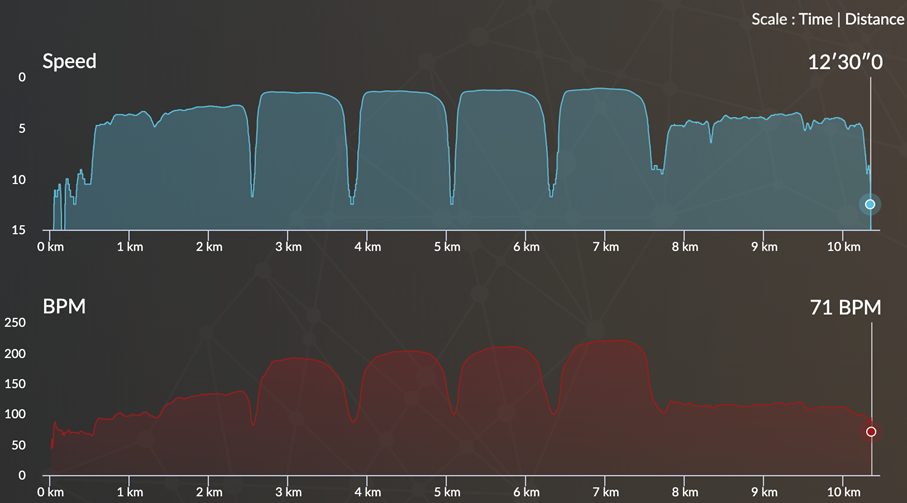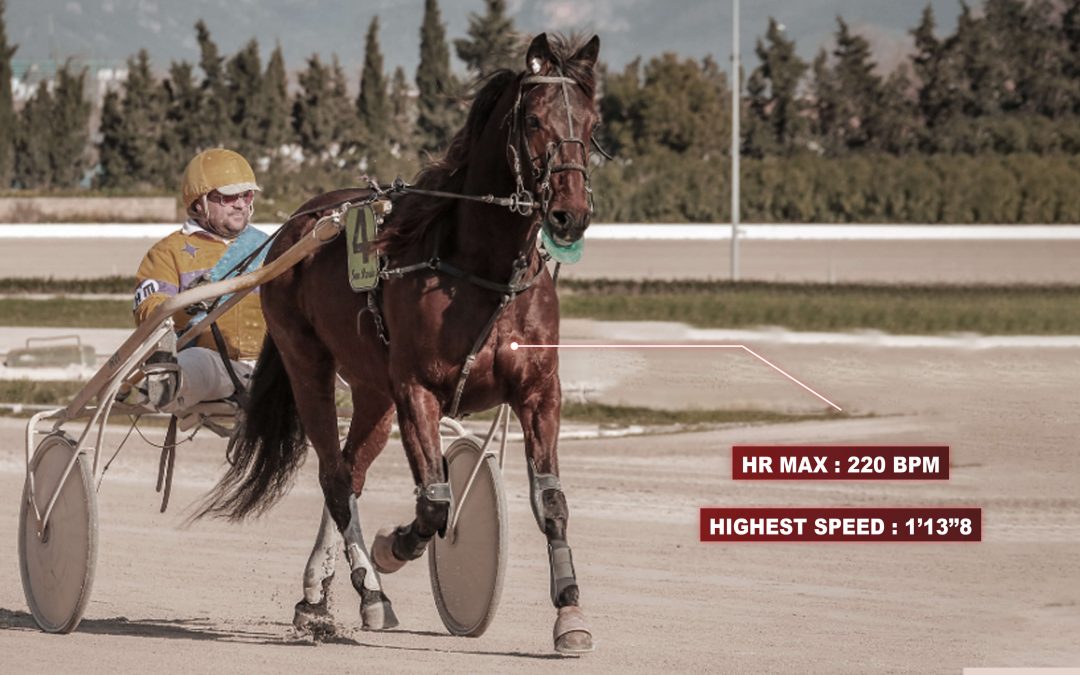The standardised test is a physiological assessment tool. It aims to measure cardiac and metabolic responses of the racehorse’s body during a standardised exercise. Quantifying physical performance and health status at a given time allows to perform regular monitoring and secure a safe environment. Unlike humans, these athletes are unable to communicate. Therefore, in-depth physiological knowledge of each horse is essential to better understand them individually. We aim to present the interests of standardised testing in standardbreds and a concrete example frequently used by veterinarians and researchers.
What are the avdantages of standardised tests?
What are the goals of a standardised test for standardbreds?
There are many advantages to the standardised test for standardbreds. The first is to assess physical ability at an early age. For logistical, financial, and sporting reasons, future performers detection is often a goal pursued by teams within the horses’ environment. Standardbreds effort test is one of the tools used to identify promising horses and those lacking the potential to race the distance or speed in races. However, it is important to remember that this type of test is hard on the body and must therefore be carried out in a safe environment to ensure the well-being of the young horse.
The second advantage is the objectivised evaluation over time. It offers the possibility to follow a horse very precisely to validate the training intensity with tangible measurements. Progress and effectiveness are then measured objectively by acquiring references for each horse. It is then possible to make reliable comparisons of the same horse from one period to the next as well as between different horses in a stable undergoing an identical standardised test.
Finally, it can detect early signs of pathology or injury that would not be visible to the naked eye. For example, an abnormally high heart rate during the warm-up may indicate pain, or an abnormal recovery may be a warning of the horse’s cardiac condition.
What are the parameters measured during a standardised test?
Heart rate
Heart rate is the ultimate fitness indicator. It is not sufficient on its own to assess the sporting ability of a horse, but it is a good starting point. It is a parameter that is significantly influenced by training. Therefore, heart rate is often used to better understand the fitness of athletic horses.
Lactatemia
Lactatemia is the level of lactate present in the blood at a given moment. This parameter, which is well known in the world of sports medicine monitoring, is measured by means of a blood sample taken after an effort. It is from this measurement that V4 is calculated. This is the speed at which the horse has reached a lactatemia of 4mmol/l.
Speed
Regularly measured during Standardbreds’ training using timers, speed is an important element to objectivise in order to evaluate the intensity of the effort that the horse is asked to make.
The V200
The V200 is an interesting comparison tool and allows relevant conclusions to be drawn. This parameter calculates the speed for a heart rate of 200 beats/min. It is a reference point for comparing one horse to another or the same horse at different times. With effective training this parameter should increase over time.
V2 and V4
V2 and V4 correspond to the speeds at which the lactate reaches 2 and 4 mmol/l respectively. By calculating these parameters, it is possible to establish the aerobic/anaerobic transition zone of each horse and thus obtain a more detailed knowledge of their cardiac capacity. These parameters are influenced by training and strongly impact the racing performance of trotters. Training improves aerobic capacity and increases the body’s ability to absorb lactate production.
To rely on these data, measurements should be taken under perfectly comparable conditions and on an identical test protocol.
Required tools to set-up a standardised test
The equipment needed to carry out this type of test consists in 2 elements:
- A heart rate monitor to measure the heart rate throughout the effort. The EQUIMETRE heart rate monitor will be a major asset as it allows the speed and heart parameters to be viewed live. It is also possible to analyse them on the platform once the training is over.
- A portable analyser to measure lactatemia through lactate concentration.
Concrete example
The chosen test for this article is the test developed by Demonceau and Auvinet in 1992. The goal is to progressively increase the effort intensity required in order to measure the Standardbred body’s response from an energetic point of view.
The test begins with a warm-up lasting about 10 minutes at a slow trot of 250 to 300m/min. The most commonly used test for trotters consists of three 3-minutes stages with a 1-minute rest period between each stage. They are performed at a constant speed, although the speed increases gradually from one stage to the next. The speed of each stage depends on the level of training and the age of the horses presented. Active recovery of about 10 minutes at a slow trot is recommended to allow the horse to return to the stable without excessive breathlessness. The use of a connected sensor to visualise live data allows maintaining speed regularity during the stages.

Speed stages (in m/min) depending on the age and training level
Interval training analysis
Standardbreds’ training often uses straight-line exercise repeated over the training period with a gradual increase in intensity. These weekly exercises are also an interesting basis for measurements, as they meet the requirements of the protocols:
- Identical conditions and standardised protocol
- Gradual increase in intensity in stages
- Stepwise increase in intensity with short recovery phases
- Active recovery after interval training
For this type of training, the V200 and acidosis indicators measured automatically by EQUIMETRE and available on the Analytics tool are reliable. On the intervals timetable, intervals are automatically detected and average values are indicated.

Data from the EQUIMETRE platform
Longitudinal analysis of the evolution of these parameters over the course of the year allows an objective view of the physiological evolution of racehorses.
Conclusion
In conclusion, these tests are routine examinations of standardbreds in training. The aim is to assess their physical abilities from an early age, to detect anomalies, and to validate and plan the training load. These exercises are intense for the horses, so we advise you to contact your veterinary team for more information.
Sources
Leleu, C., Cotrel, C. and Courouce-Malblanc, A., 2005. Relationships between physiological variables and race performance in French standardbred trotters. Veterinary Record, 156(11), pp.339-342.
Genty, A., 2021. Les pratiques d’entraînement du trotteur français avant la qualification. Étude de terrain en région de basse-normandie. Doctorat. École Nationale Vétérinaire d’Alfort.
GALLOUX, P. (2017). Evaluer la condition physique de son cheval. Retrieved 23 July 2020, from https://equipedia.ifce.fr/equitation/disciplines-olympiques/planification-de-lentrainement/evaluer-la-condition-physique-de-son-cheval-pour-individualiser-son-entrainement
Auvinet, B., Galloux, P., Michaux, J., Franqueville, M., Lepage, O., Ansaloni-Galloux, A., & Coureau, C. (1991). Test d’effort standardisé de terrain pour chevaux de concours complet (TEST). Science & Sports, 6(2), 145-152. doi: 10.1016/s0765-1597(05)80125-x
Demonceau, T. and Auvinet, B., 1992. Test d’effort de terrain pour trotteurs à l’entraînement : réalisation pratique et premiers résultats. Congrès: 18ème journée d’étude Quoi de neuf en matière d’études et de recherches sur le cheval ? (4 mars 1992; Paris),.
Key words: standardised test Standardbreds, heart rate racehorse, v200 and V4, fitness level, racehorse cardio, horse data science


